CSI and CSIO requirements. It might not sound all that exciting, but the third topic for discussion at the FEI Sports Forum in Lausanne yesterday certainly raised the temperature in the room. John Madden, Chair of the FEI Jumping Committee and FEI 1st Vice President, opened up with a long list of questions in regards to the CSI and CSIO requirements, asking the participants for their input on all of them.
Peter Bollen, member of the FEI Jumping Committee and President of the International Equestrian Organisers’ Alliance, then went on to present the proposal from the International Equestrian Organizers Alliance (IEOA) and Alliance of Jumping Organisers (AJO) on harmonizing of entry fees worldwide – also detailing the challenges many show organizers meet when it comes to surviving financially. However, the session ended as a heated discussion about pay cards, and the invitation system for the Global Champions Tour and Global Champions League, with Alban Poudret (Sports Director for CHI Geneva) and Stephan Conter (Event Director for the Brussels Stephex Masters as well as Knokke Hippique) – expressing their concerns when comparing the rules for these two series to the framework for other show organisers. [1]
There can be no doubt that the IEOA and AJO’s concerns, that has resulted in their controversial harmonizing-proposal, are legitimate. “Actually, IEOA believes in a more free market,” said Bollen who believes that show organisers should be rewarded for excellence and not only the amount of prize money available. “More free market for entry fees, of course limited to a maximum – and very important we believe: Linked to the Event Classification System.”
“Most of the shows today are not profitable, and the vast majority are threatened by the new invitation rules. This is not a rumour, this is a fact,” said Bollen. “It is not the IEOA’s intention to make the horse sport more elitist, it is our intention to let the unique horse shows survive.”
Although the proposal has met some serious opposition, it sheds light on the many challenges the show organizers meet – especially following the introduction of the new invitation rules. Following the new rules, the CSI organizing committees have a total of 20% of the invitations compared to a previous 30%. The rules read: “All OC invitations must be under the same conditions as for other participants and cannot be granted in return for a financial contribution.” In other words: No more pay cards, a term used to describe paying for an invitation to a show, for example with low-ranked riders buying VIP seating to compete at an event they would otherwise not be invited to. Hence, loss of income for the organizers.
“We have been asked for years to try to bring pay cards under control,” said Madden. “We think that the invitation system we now have in our rules helps take care of that. I think it’s the first time we are really able to get a handle on it.”
Secondly, the invitation system is meant to provide opportunity for riders based on merits and performance. “Not based on their pocket book or where they live, and we think this invitation system will be a huge help for that,” Madden said.
From a young rider’s point of view, Ireland’s Jack Dodd illustrated how a potential harmonizing of entry fees worldwide could threaten the existence of his international career. “Speaking on behalf of most young riders, I think if you increase the entry fees it is going to kill the sport. It is going to kill the two- and three-star shows because, for example myself I take the expenses on my horses as do a lot of other riders. Should the entry fees increase, I’m just going to go to national shows. If you look at shows in Holland and Belgium, like Opglabbeek for example who run good two- and three-star shows, but they also run good national shows – what is the point of me going to a two- and three-star show and pay stupid entry fees when I can just go to their national show. If more people end up doing that, they will increase the prize money at the national shows and then you are going to lose riders in the FEI.”
“In Europe we don’t want to come into your system,” said Eleonora Ottaviani – President of the International Jumping Riders Club – to John Madden, referring to the American entry fee regulations where the entry fee is set to a percentage of the prize money that can be won at the show or per class.
USEF President Murray Kessler pointed towards how the European system and the American system compliment each other, saying: “It falls under the category, ‘If it’s not broken, don’t fix it’.”
“The changes in the invitation rules, the harmonization of entry fees and the implementation of the qualification system – can we consider them as different topics or should we analyse them together?” asked Bram Vandewalle (Event Director of the Longines Masters of Paris) – illustrating the complexity of the discussions.
While the intentions behind the new invitation rules are indeed of the very best kind, some show organizers find it hard to accept that different rules apply.
“We are all searching to have some income,” said Stephan Conter. “We agree to cancel the pay cards, but we need some income and we need to be considered at the same level as all other organizers in the world. I think we should speak about and think about how much invitations we have as organizers of the show, for sure we have to take the best riders in the world and to give everybody a chance – but it’s like an economy. You have shows at two-star level that would cost 700-800 000 to organize, and we organize shows that cost between 2.5-3 million. There should be a difference in that. Or, we have to find a sollution for the entry fees or we have to be competitive also with other shows. You give an agreement to the Global Tour, no critique to it, but there they can decide who they invite. We can not compete against that. If you want us – all other show organizers from five-star to two-star shows – to be killed, and to decide for us who is going to ride at our show and what they are going to pay then what shows are going to continue to exist in our world? Only the Global Tour, or are we also going to think about the other five-stars?” asked Conter pointing out that riders are willing to pay more for shows with high-quality facilities, and that with the number of events in all categories in the FEI calendar the riders can also choose what they want to pay for and where they would like to compete based on what they can afford.
Alban Poudret also weighed in on the new invitation systems, both for the CSIs and the Global Tours. “We see more transparency, more fairness, but I am a bit surprised that you say that it will limit or control the pay cards," said Poudret referring to the CSI Invitation System. "I think it will limit the open sport, like Jack said. In Geneva in 25 years we never had a pay card. You reduced our 30% invitations to 20%. Last year we had 20 riders at maximum 25 years of age, and we try to invite them and also ‘oldies’ like John Whitaker and many friends of the show. But with 20%, perhaps twelve riders, it’s really impossible to invite all of them. And, the same year you do that – reducing from 30 to 20% you make better conditions for the Global Tour and the Global League with only the top fifteen riders and there is a lot of possibilities for invitations. And for our shows: No.”
The invitation rules and invitation system for the Longines Global Champions Tour and the Global Champions League became a hot topic indeed.
“John, can you just enlighten us a little bit more about two things?” asked Henk Nooren from the European Equestrian Federation's Jumping Committee who referred to the legal definition on pay cards laid out by the FEI: “Any remuneration paid in exchange for an invitation to compete at an FEI Event,” continued Nooren. [2] “And we all know by now, if you are not in the best 15 in the world, if you are not a home rider, then you can not participate if you are not part of a team. You can not. And that team has to pay a small, what you call, investment of 2 million Euros a year. So, how do I compare that with a remuneration?” asked Nooren.
“Well, that is quite simple,” replied Madden. “It’s not the FEI’s business to tell you or anybody else what you can invest in. The people that are buying teams with the GCL are making an investment in the equity of the team and within comes all the rights and responsibilities of team ownership (…) This is not the jurisdiction or the competence of the FEI.”
“It’s the goal of the GCT/GCL, I believe by contract, that a rider can not be obliged to pay to be on a team and does not get right of participation in an event because they are an owner of a team. Additionally, pay cards are strictly forbidden,” Madden added.
Not satisfied with the answers given, Nooren said: “So, the 60% - that means the best 30 riders in the world would be able to participate in that Global Champions Tour,” said Nooren referring to the CSI Invitation Rules that states that this is the amount of invitations that have to come directly from the FEI world ranking list in descending order. “Now, I am 27th on the ranking list – the best 15 are going. I am not part of a team. How do I compete?”
“It is just like any other show. You get in if you are good enough in Group 1,” said Madden referring to the 30% that will be taken in descending order from the Longines FEI ranking, opposed to the 60% in the CSI Invitation Rules. “If you are high enough ranked, depending on what other riders participate in, you get to compete,” Madden replied.
Running out on time, Stephan Conter took the word and asked: “If we agree for only one person, are you not scared that we are all going to come tomorrow and ask you to organize a series and team competitions? Will we all be free on that?” to which FEI President Ingmar De Vos replied: “If you come with a proposal that is acceptable for the FEI within the framework and the rules, then yes – everybody is free to do that.”
Fake news is a term recently brought to fame by the President of the USA, yesterday the equestrian community got its equivalent. “I believe personally that the pay card discussion is a fake discussion,” said the FEI President. “The rule to say ‘No pay cards’ – first of all what is the definition and we heard some definitions – the correct one is the one laid down in our General Regulations. It is a fake discussion,” said De Vos. “I have been an organizer myself for more than twenty years. For more than twenty years there have been pay cards in some ways. Was it buying a table, was it doing a favour to a friend, was it a sponsor of the event calling to ask to invite that or that rider? By saying all the time that we don’t want pay cards, pay cards are forbidden – that is one thing, but what John explained very well is that we have rules in place that did not allow it, or that limited the spots for the organizing committee. And what happened in reality, because these rules have already existed for more than ten years – they were just not applied. And that is were it went wrong, and I am sorry to say – I have also been an organizer – is that many organizers, I don’t say everybody, but many of them used the fact that there was no control. And in the end, a lot of participants in an event – although the rules were in place forbidding it – were basically pay cards. What I would like you to do, is to stop a little bit the discussion on pay cards (…) What is much more important now is that we put in place a system to control it; guarantee to the athletes that deserve it that they will be taken from the ranking in descending order,” said De Vos.
“What we want is the same rules as for other organizers,” replied Conter to De Vos – and with that the session came to an end.
Click here for the full supporting documents for this session.
Click here for the presentation on CSI / CSIO Requirements presented by John Madden.
Click here to find all the documents from National Federations and other stakeholders.
Click here to watch this session in full.
[1] FEI Jumping Rules, Annex V 'CSI Invitation Rules':
- 60% of the invitations come directly from the FEI world ranking list in descending order
- 20% of the invitations are reserved for home riders and three to four FEI wild cards
- 20% of the invitations are reserved for the organizers themselves (many are pay cards)
Rules for the 2017 Longines Global Champions Tour:
- Group 1 consists of 30% of the number of athletes participating, and will be individual athletes taken in descending order from the Longines FEI rankings
- Group 2 consists of 30% of the number of athletes participating, and will be GCL team athletes taken from the Longines FEI rankings top 250 as of August 31 of the immediately preceding year (maximum 1 per team)
- Group 3 consists of 10% of the number of athletes participating, with one FEI wild card as well as home athletes selected by the host national federation
- Group 4 consists of 30% of the number of athletes participating selected by the organizing committee. The invitations in this group can only be used to invite GCL team athletes so that each team participating in the GCL event taking place during the GCT event has three team athletes. It is not obligatory that the athletes be chosen from the Longines FEI rankings.
[2] FEI General Regulations art. 115: ”The FEI may impose a specific online system to manage invitations, provided the Secretary General has duly informed the OCs and NFs of such requirement with sufficient prior written notice. Invitations for individual Athletes to take part in CIs must be sent to the NFs of the Athletes concerned. Invitations from OCs must be sent to the NFs of the Athletes concerned. Invitations must include copies of the schedule. The percentage of Athletes personally invited by OCs shall be specified in the Sport Rules for the specific Disciplines. However, these invitations from OCs (foreign and/or home Athletes) must be under the same conditions as for other Athletes and must in no way be directly or indirectly in connection with a financial contribution. Pay Cards and appearance fees, even in the form of VIP tables and Event privileges, are strictly prohibited and will be sanctioned.”
FEI General Regulations Appendix A - Definitions: "Pay Card: Any remuneration paid in exchange for an invitation to compete at an FEI Event."
Text © World of Showjumping // Picture © FEI/Richard Juilliart









